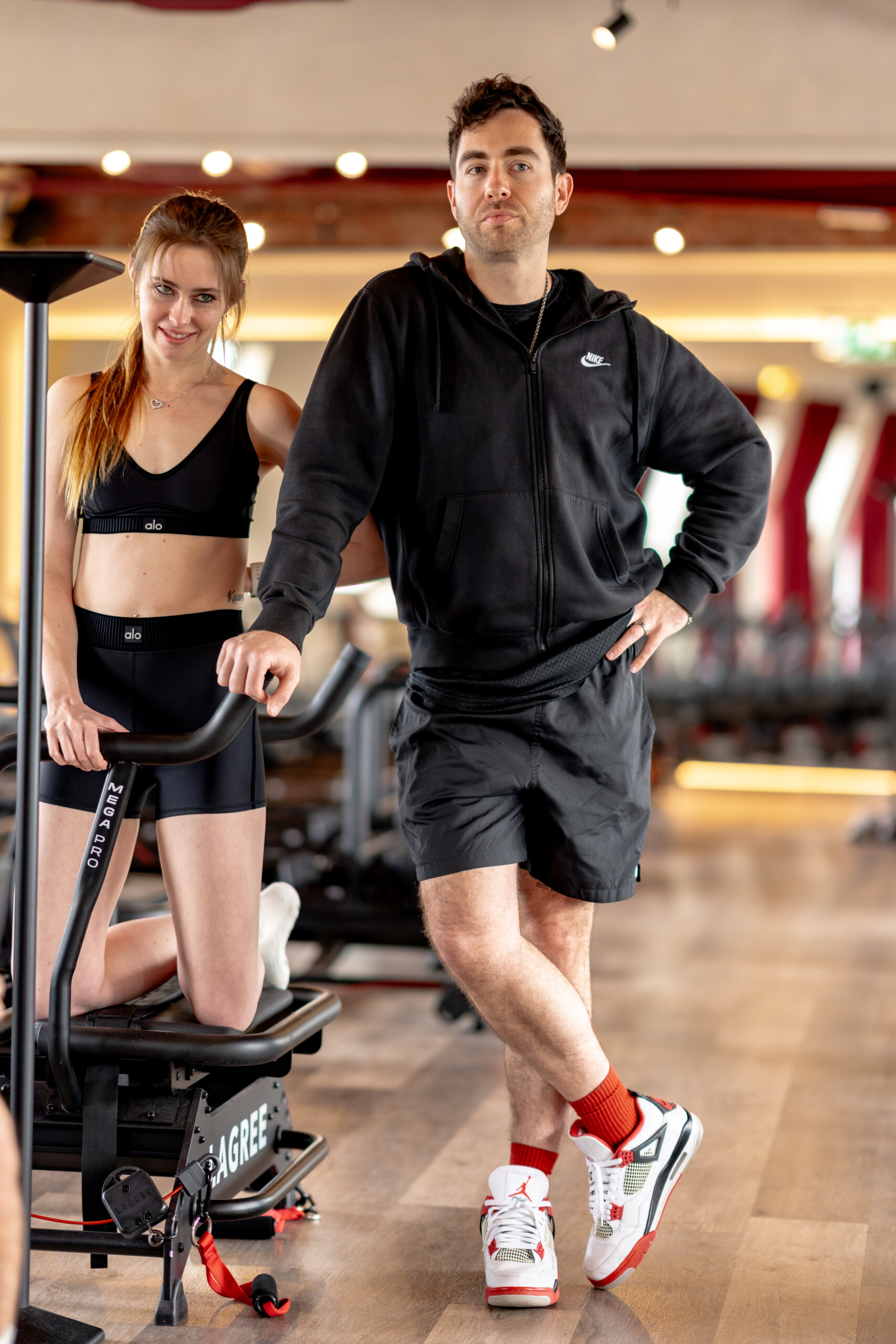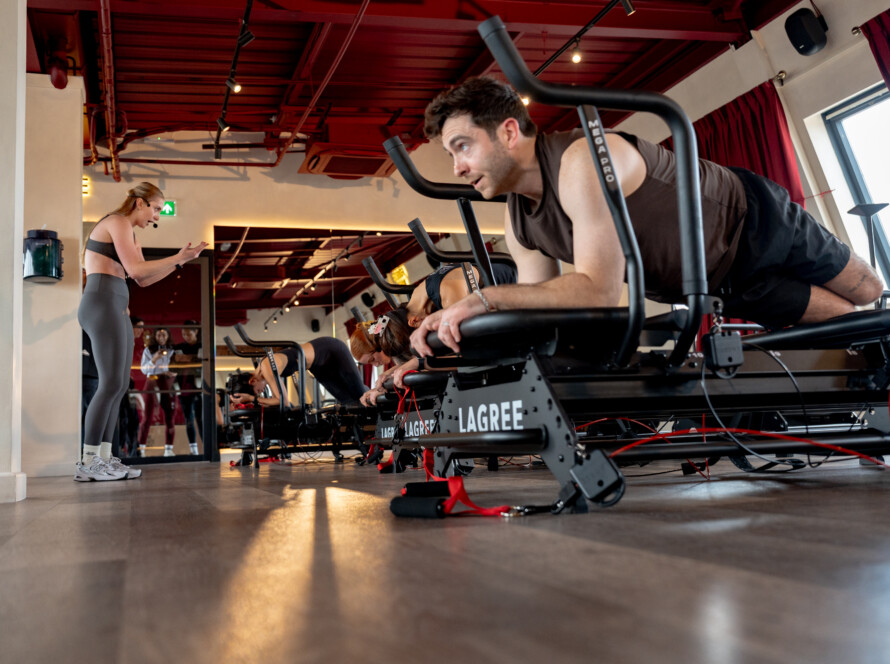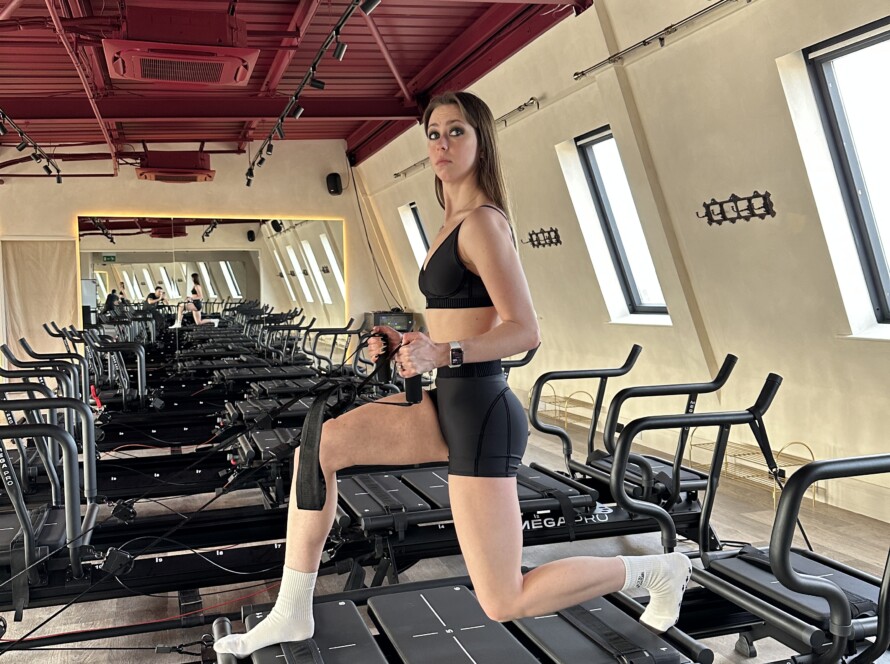You start a Lagree Workout, and after a few sessions, you wonder when results will show, especially if the scale and mirror seem slow to respond. How Long Does It Take To See Results From Lagree? Do you notice changes in weeks or months, and which parts of your body shift first? This article lays out realistic timelines for muscle tone, fat loss, core strength, and endurance, explains how session frequency and workout intensity affect body composition, and shows simple ways to track progress and avoid plateaus.
BST’s Lagree in London offers guided classes, personalized coaching, and precise progress tracking to help you hit those milestones with steady, measurable effort.
How Long Does It Take to See Results from Lagree: Typical Timeline
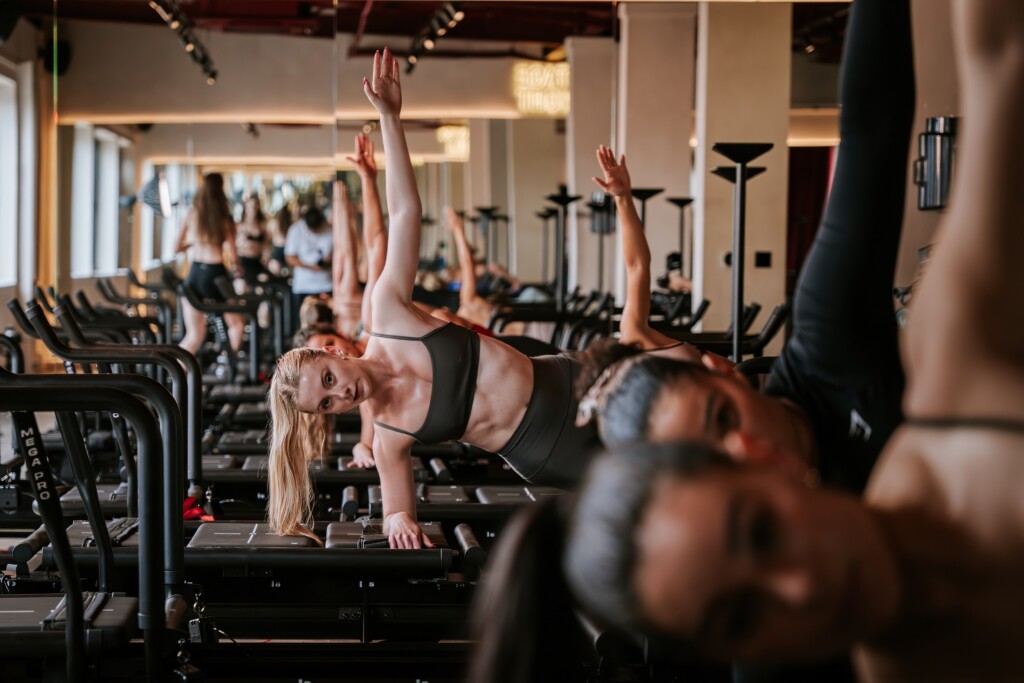
Weeks 1–2: Locking Down Posture and Core Control
Beginners usually feel changes first in how they hold themselves and how the core engages. The nervous system adapts quickly; muscles learn to fire in the correct pattern.
You will notice:
- Less shaking in basic holds
- Improved stability during transitions
- Cleaner alignment in standing and plank variations
Focus on steady breathing and strict form to make these early gains stick. Are you noticing better balance during single-leg drills?
Weeks 3–4: Visible Toning and Rising Endurance
By week four, you should see firmer muscle tone and feel that longer sets get easier. Endurance improves because the Megaformer work emphasizes time under tension and sustained control. Moves that once felt intimidating, like Bear, begin to feel more controlled and precise.
Try increasing class tempo only after form holds steady; adding light progressions will let you push endurance without sacrificing technique.
Weeks 6–8: Body Composition Shifts and Greater Mobility
Around six to eight weeks, fat loss and lean muscle definition become more apparent to others and in the mirror. Metabolic conditioning from continuous high-tension sessions builds an afterburn effect that supports fat loss while you keep or add muscle.
Flexibility often improves, too, because slow controlled ranges force muscles to lengthen under load. Check how clothes fit and how daily tasks feel when strength meets mobility.
Beyond 3 Months: Compounding Strength and Function
At three months and beyond, the changes compound. With three or more sessions a week, you deepen core definition, raise overall strength, and notice clear carryover into daily movement and sports.
Progress becomes less about single progressions and more about consistent overload, recovery, and more brilliant class selection.
How many sessions are you booking each week right now?
How Your Experience Lines Up With Typical Progress
Your path aligns with common patterns: two months, twice a week, effectively builds the technical base and confidence, particularly in handling complex moves like Bear. Ramping to three sessions weekly speeds visible results, as the body adapts faster to frequent, controlled tension.
Tracking reps, resistance settings, and recovery will help determine whether changes come from increased frequency or improved form. Do you log these metrics or rely on feel?
Why Lagree Produces These Results: The Mechanics
The method stresses long muscle tension at slow controlled tempo, which recruits slow-twitch fibers while still challenging fast-twitch recruitment through continuous effort. That balance sculpts lean muscle without adding bulk and keeps joint impact low.
The Megaformer setup lets instructors vary resistance and range precisely, delivering metabolic conditioning and a measurable afterburn. Prioritize tempo, full range of motion, and progressive overload for steady gains.
Related Reading
Factors That Influence Lagree Results Timing
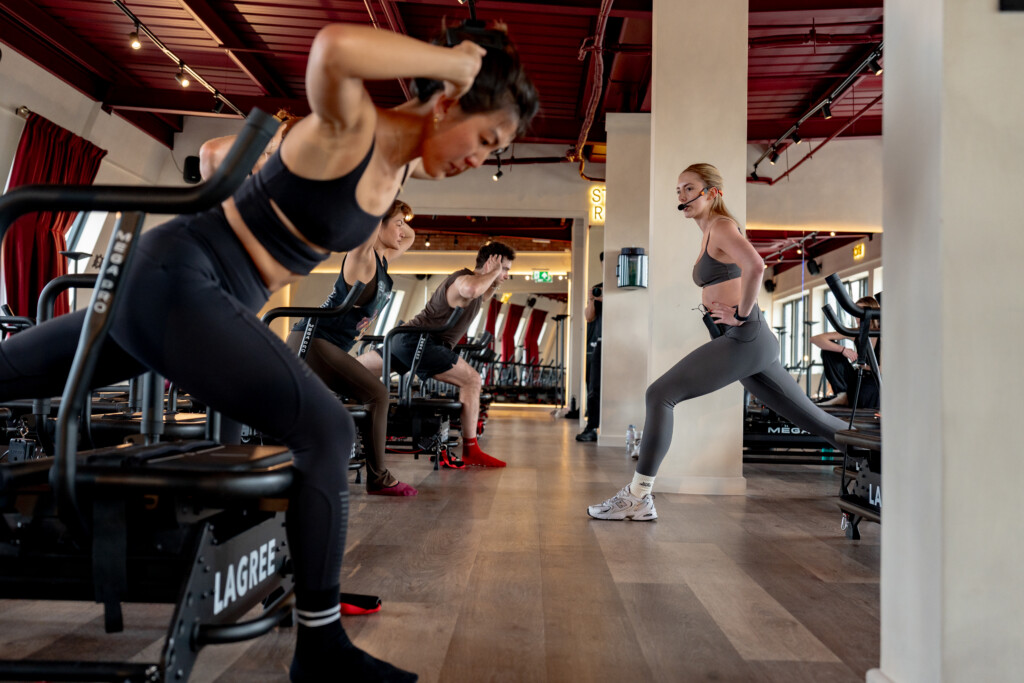
Training Frequency: Show Up More To Speed Up Visible Results
How often you train drives the progress timeline for:
- Muscle tone
- Fat loss
- Strength gains
- Endurance improvements
Three to four Lagree sessions per week give your muscles repeated stimulus while leaving time for recovery and progress tracking.
Once a week will work, but changes come slower, and a high frequency without rest raises injury risk. Think in weeks, not days, when planning your program, and ask yourself how many sessions you can commit to this month.
Workout Intensity: Tension and Form Determine How Fast You Change
Lagree depends on slow, controlled movements and constant tension on the Megaformer or reformer to force muscles to adapt. Pushing to your edge while maintaining flawless form accelerates strength gains and visible results in body composition, whereas coasting or skipping springs hinders progress.
Are you staying present in each rep and challenging your limits without sacrificing safety?
Starting Fitness Level: Where You Begin Alters the Early Timeline
Beginners often notice stability, balance, and endurance gains in the first two to four weeks as the nervous system learns to recruit muscles efficiently. Still, visible muscle tone and measurable fat loss may take longer.
Experienced exercisers move to heavier springs and advanced variations faster, which compresses the progress timeline for noticeable changes.
What baseline can you establish today to achieve measurable strength gains?
Nutrition and Recovery: You Grow Between Sessions
Protein intake, calorie balance, hydration, and sleep control the rate of muscle repair and fat loss, so the training stimulus in class is only one part of the results equation. Poor sleep or chronic energy deficit can hinder progress, even with consistent sessions.
Targeted recovery protocols and sufficient protein support can help maintain lean muscle and accelerate body composition changes. What does your daily protein and sleep plan look like right now?
Lifestyle Habits: Daily Stress, Movement, and Sleep Shape Outcomes
Stress hormones influence fat loss and recovery, so managing stress and keeping active on non-Lagree days helps you avoid stiffness and supports endurance improvements.
Simple habits like walking, mobility work, and consistent sleep amplify the effects of training frequency and workout intensity and improve your progress tracking.
Can you add a short walk or a mobility routine on off days?
Expert Guidance for Safe and Effective Women’s Fitness
BLOOD, SWEAT & TEARS offers a women-focused fitness space where certified instructors run safe, effective 45-minute Lagree classes that combine strength and cardio, helping clients feel and see a difference in as little as two weeks.
Book a class to try Lagree in London and stop guessing at results in a dirty, boring gym. All instructors complete a rigorous mentorship program to keep every class fun, uplifting, motivating, and safe while helping you reach your fitness goals faster without needless risk.
What Beginners Should Expect
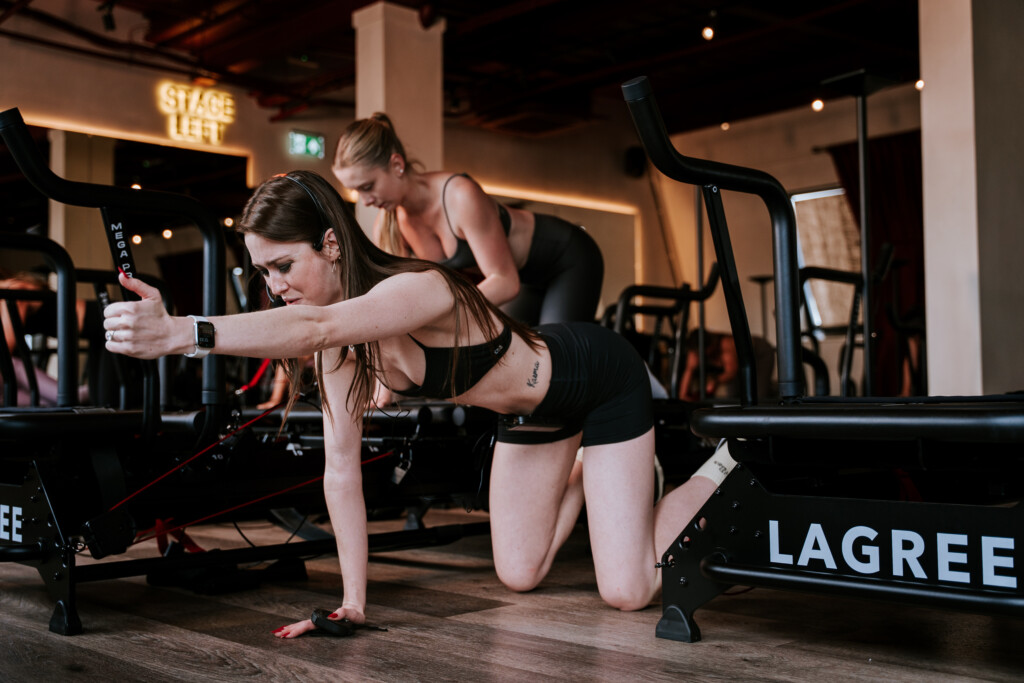
First Session Reality Check: What Beginners Should Expect from Lagree
Beginners step into Lagree and notice the class moves at a steady, firm pace. Expect precise coaching, controlled resistance on the Megaformer, and a focus on holding positions under tension. You will feel muscles work in ways they may not have before.
The time it takes to see results depends on your frequency and recovery, but early changes in endurance and muscle awareness often appear within a few sessions.
Expect the Burn: Muscle Soreness and Recovery
Lagree pushes muscles with high resistance and slow, controlled reps, so soreness is common. Typical timing: soreness peaks 24 to 72 hours after a session and fades as your body adapts.
Use:
- Light movement
- Foam rolling
- Adequate protein
- Sleep to aid recovery
If you train consistently two or three times per week, soreness will decrease and workouts will feel more manageable in two to four weeks.
Lean Strength and Flexibility Gains: When You’ll See Them
You can feel neuromuscular changes and better muscle engagement in the first two to four weeks. Noticeable strength gains and improved muscle tone usually show in four to eight weeks with consistent training.
Greater shifts in body composition and visible changes in muscle shape typically occur around eight to twelve weeks, especially when you pair Lagree with sensible nutrition and a steady frequency.
Balance Boost: Improved Stability and Core Strength
The Megaformer challenges stability and forces your core to work continuously. Expect measurable improvements in balance and core strength within three to six weeks, with better posture and fewer balance slips as you progress.
Frequent practice builds motor control and translates to everyday tasks.
Cardio That Builds Endurance without Joint Stress
Lagree provides a cardio stimulus through continuous, fast-paced sequences while staying low-impact on joints. You may notice better breathing control and endurance after a few classes.
Significant cardiovascular improvements usually require consistent sessions across four to eight weeks, depending on effort and class intensity.
Session Frequency and Progress Timeline: How Often Should You Train?
Train two to three times per week to see steady results. One class a week helps maintain fitness, but slows the timeline to visible changes. Pushing toward four weekly sessions accelerates strength gains and tone but requires attention to recovery.
Track progress every two to four weeks to keep your plan realistic.
First Results vs Long-Term Changes: What to Expect When
- What do you feel first?
- Increased muscle activation, less fatigue during similar moves, and reduced soreness after a short period.
- What appears later?
- Noticeable muscle tone, weight, or fat loss if you manage your diet, and improved endurance.
The gap between feeling better and seeing a visible change often spans the first month to three months.
Mental Reset: Stress Reduction through Focused Movement
Lagree asks you to:
- Breathe
- Align
- Concentrate
That focused attention reduces stress hormones and provides a break from daily pressure. Many people feel calmer immediately after class and enjoy a clearer headspace for the rest of the day.
Endorphin Lift: Mood Improvements from Exercise
Physical exertion releases endorphins. Expect mood boosts after class and more energy across the week with regular practice. These shifts support consistent training and help sustain progress toward your fitness goals.
Mental Toughness and Focus: Building Resilience
Holding demanding positions and managing fatigue builds mental resilience. You learn to stay present, manage discomfort, and push through controlled intensity. That skill improves concentration and stress handling beyond the studio.
Growing Confidence: Progress and Personal Wins
As strength and endurance increase, confidence follows. Mastering movements and tracking measurable improvements reinforce a sense of accomplishment and support continued commitment.
Mind and Body Connection: Better Awareness of Movement
Lagree trains precise control and alignment, sharpening your awareness of how muscles engage. That heightened connection helps you move more efficiently in daily life and other sports, reducing injury risk.
Community and Support: The Social Side of Progress
Classes often foster camaraderie. Trainers and peers provide cues, encouragement, and accountability that keep you coming back. That social reinforcement matters for long-term consistency and results.
Related Reading
How Experienced Practitioners Can Maximize Results
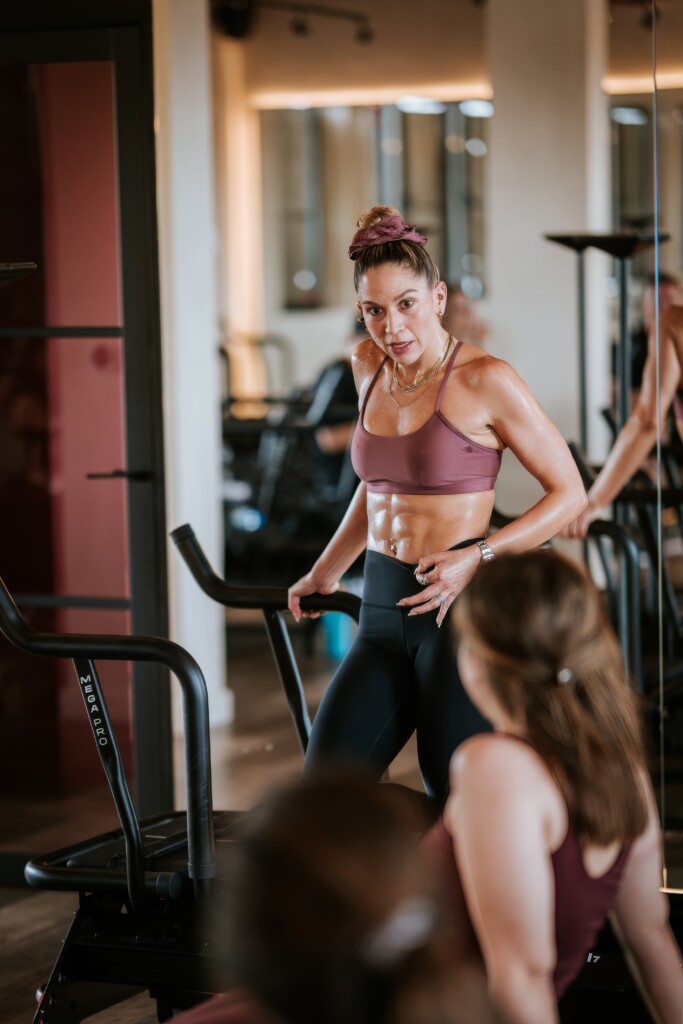
Advanced Playbook: Max Out Your Lagree Gains
Experienced practitioners ask how long to see results and then push past plateaus. Expect early neural gains in two to four weeks, followed by clearer strength and tone by four to eight weeks, when you train consistently and pair sessions with smart recovery.
For visible body composition changes, most people need eight to twelve weeks of focused training plus matching nutrition and sleep.
Want faster progress? Increase frequency cautiously while tracking objective measures such as:
- Reps
- Plank hold time
- Weekly class count
Increase Frequency but Recover Smartly: Train More, Recover Better
Bump sessions to five or six per week only after you have a solid base and clean movement patterns. Rotate focus days so you emphasize core on some sessions and lower body on others to spread load across tissues and avoid overtraining.
Use active recovery between intense sessions: gentle mobility, light cardio, and soft tissue work to promote circulation without stressing the same muscles. Sleep remains the single biggest recovery tool; aim for consistent quality sleep each night to support repair and hormone balance.
Dial in Nutrition for Your Goals: Fuel the Speed of Change
For fat loss, aim for a modest calorie deficit and keep protein high to preserve lean mass. For muscle tone and strength building, add a modest calorie surplus while keeping protein in the range of 1.6 to 2.2 grams per kilogram of body weight to support repair and growth.
Time carbs around harder sessions to sustain effort and refill glycogen. Hydrate intelligently; even mild dehydration lowers output and slows recovery. Track body composition, not just scale weight, to see how training and diet change muscle and fat over weeks and months.
Embrace Progressive Challenges: Make Every Rep Harder
Advance by increasing time under tension, slowing eccentric phases, and tightening form on transitions. Add complexity with moves like French Twist, wheelbarrow variations, and super lunge to test stabilizers and single-leg control.
Gradually increase spring resistance or range of motion to deliver progressive overload, which forces adaptation. Use tempo control and micro loading strategies rather than random heavy increases so you keep joints safe and technique precise.
Track Progress Beyond the Mirror: Measure What Matters
How long it takes to see results depends on the metrics you use.
Track:
- Strength gains
- Mobility
- Balance
- Endurance
- Class adherence
Log objective numbers, including plank hold seconds, number of flawless transitions, resistance settings, and the number of classes per month. Photograph progress every two to four weeks in consistent lighting and posture to detect subtle changes in muscle tone and posture.
Use these measures to adjust training frequency, nutrition, and recovery so your program stays responsive.
Programming Tools for Experienced Practitioners: Structure to Sustain Gains
Periodize workload across weeks with deliberate intensity cycles and lighter recovery weeks to prevent stagnation. Combine high-intensity Lagree sessions with complementary low-impact mobility or controlled strength work off the Megaformer to shore up weaknesses.
Include single-leg and anti-rotation drills to correct asymmetries that limit force output and increase injury risk. Use session notes to record spring settings and perceived exertion, allowing you to reproduce progression and avoid random efforts.
Recovery Tactics That Let You Train More: Sleep, Mobility, and Load Management
Prioritize sleep timing and regularity because growth and repair are driven while you rest. Use targeted mobility and foam rolling after moderate sessions to maintain joint range without taxing recovery systems.
Monitor load with simple tools such as session RPE and weekly training volume; scale back when perceived effort increases for the same outputs. Add cold or contrast therapy sparingly to manage soreness when training density rises.
Fine Tuning: When Results Stall and Adjust Without Overreacting
If strength or composition plateaus after eight to twelve weeks, shift one variable at a time. Increase protein if recovery gaps appear. Swap in new complex movements to challenge stabilizers.
Change session density or tempo to alter the stimulus. Small, consistent changes often produce more reliable gains than big program overhauls.
Practical Checkpoints: Know If Your Lagree Program Works for You
Ask yourself these questions each week:
- Are your resistance settings increasing?
- Do you hold core positions longer with less shake?
- Is your recovery improving or deteriorating?
- Are clothes fitting differently even if the scale is steady?
These practical checkpoints tell you how long it takes to see results in your case and guide the next program step.
Related Reading
Book a Lagree Class in London Today

What BLOOD, SWEAT & TEARS Offers Women Focused Fitness
BLOOD, SWEAT & TEARS creates a women-first studio where programming, atmosphere, and staff center on results and safety. Classes mix strength building and cardio into a structured 45-minute workout so you get both muscle tone and metabolic conditioning in a single session.
Instructors hold certifications and complete a hands-on mentorship that keeps form tight, intensity high, and injury risk low. Want an alternative to long, lonely hours in a dirty or creepy gym?
How Fast Will You See Results From Lagree Here
The time it takes to see results from Lagree depends on effort and consistency, but the method is efficient. Many clients feel differences in endurance, posture, and muscle activation after one or two sessions. With regular attendance, most people notice visible changes and better muscle tone within two weeks.
Expect clearer shifts in body composition and measurable strength gains around four to six weeks, and deeper fat loss and shape change across eight to twelve weeks when workouts pair with good nutrition. Where you start and how often you train determine your Lagree results timeline.
What Two Weeks of Consistent Lagree Looks Like
Show up two to three times per week for two weeks, and you will likely feel less fatigue between sets, tighter core control, and improved range of motion. Clothes may fit differently, and daily energy can climb.
Track progress with short videos, a simple tape measure, and a notes app for workout loads and perceived exertion. Do you want a quick checklist to measure your early progress?
Why a 45 Minute Lagree Session Produces Faster Results
Lagree uses sustained tension, slow controlled repetition, and multi-plane movements to build muscle endurance and strength without heavy loading. That time under tension increases metabolic demand, so you get cardiovascular benefit and resistance training in one efficient session.
The result: Faster improvements in tone and conditioning compared with long, inefficient cardio or sporadic weight sessions. How many minutes of focused work do you get in most traditional classes?
Certified Instructors, Rigorous Mentorship, and Safer Progress
Every instructor goes through certification and a rigorous mentorship program that covers technique, cueing, class flow, and spotting. That consistency means workouts stay effective and safe across instructors and classes.
Coaching prevents bad form that causes plateaus or injury and keeps motivation high in every session. Would you like to learn how we assess form during class?
How To Speed Up Your Lagree Results: Schedule, Recovery, and Nutrition
Aim for three to four sessions per week for faster visible results. Pair training with adequate sleep, lean protein for muscle repair, and smart calorie control for fat loss. Use progressive overload by increasing resistance or reps, and add mobility work on rest days to keep joints healthy.
Track variables like body measurements, workout loads, and how clothes fit rather than relying solely on scale weight. Ready to book a class and compare your first two weeks’ progress?
Book a Class and Experience Lagree’s Momentum
Book a class to see why Lagree has led growth nationwide for years and to test the studio’s women-focused environment, certified instructors, and results-driven programming for yourself. Which time slot fits your week?


